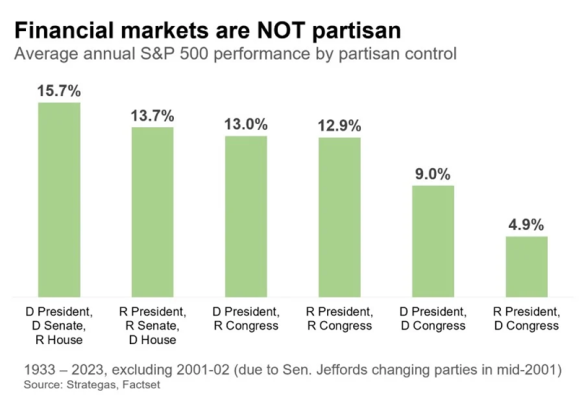
Although your Thanksgiving feast is around the corner, we want you to feast your eyes on these free or inexpensive activities to enjoy with your family and friends this November. We hope this list gives you some ways to spice up the month amidst all the holiday preparation!
November 1
Legends & Lore Boat Tour (Tuckerton) – If you haven’t quite been spooked this Halloween, you have another chance by visiting Tuckerton Seaport for a Halloween-themed, family-friendly boat ride along Tuckerton Creek starting at 4pm. Admission is $16 per person, and includes a narrated boat tour of hauntings and legends of the Jersey Shore and Pinelands, admission to the museum buildings (including climbing the lighthouse), crafts in the Folklife Center, a pumpkin decoration station, and more. With all these activities, you won’t want to miss it—and you have opportunities all weekend long through November 3rd at 5pm. For an all-inclusive list of available times and purchasing tickets, click here.
November 2
Fall Fest & Fishing Tournament (Manahawkin) – Join the Maximilian Foundation at Manahawkin Elks Lodge #2340 from 12pm-6pm for their 8th annual Fall Fest & Fishing Tournament. Enjoy the crisp autumn air with your loved ones by checking out craft vendors, local bands, a magician act, a bouncy house for little ones, and more! Admission is free for all ages, and you can learn more here.
Hoofy’s Fall Fest (Barnegat) will be held in the field adjacent to the Barnegat Volunteer Fire Company Station 11 from 11am-7pm, with a rain date of Sunday, November 3rd. There are countless family friendly activities to enjoy – such as a cornhole tournament, children’s inflatables, live music, food trucks, and more. Admission is $10 per person. Additional information can be found here.
Jersey Devil Show (Waretown) – To celebrate New Jersey’s favorite urban legend, Albert Music Hall is hosting a night of haunting music, with doors opening at 5pm and performers taking the stage at 6pm. Five different bands and performers headline the evening, and the venue is selling dinner, desserts, and beverages to enjoy between sets. Admission is $6 per person, and $1 for children 12 and under. Parking is free, and the venue is cash only. Stay tuned for more details and updates here.
Soup and Sip (Colts Neck) – Join 4JG Orchards & Vineyards from 12pm-5pm for their 4th annual Soup and Sip, where guests (ages 21+) are treated to soup and wine pairings. You can enjoy your soup and wine by the fireplace, so be sure to bring a sweater to keep warm! Tickets are $25 per person and include the soup and wine. Find more details here.
November 8
First Responders’ Teddy Bear Clinic (Hazlet) – Local first responders are hosting a Teddy Bear Clinic from 4:30pm-5:30pm at the James J. Cullen Center, giving your little one the chance to bring their teddy bear in for a check-up and become comfortable with first responders should an emergency ever occur. Attendees will learn about different local first responders and basic first aid procedures, as your child’s teddy bear undergoes them! Click here to learn more.
Jersey Shore Restaurant Week runs from Friday, November 8th through Sunday, November 17th, and features more Jersey Shore fan-favorites than ever before. For $32.24 or $42.24, you can get a 3-course meal consisting of an appetizer, dinner, and dessert at participating restaurants. You can find an all-inclusive list of restaurants and their menus here.
November 9
Fall Craft Show (Tinton Falls) – Head over to the Fort Monmouth Recreation Center from 9am-2pm to check out specialty items, such as jewelry, crocheted/knitted items, and glassware – from over 40 unique vendors. Admission is free, so bring the whole family along to find unique gifts or get gift-giving inspiration just in time for the holidays! You can find additional information here.
Holiday Craft & Vendor Show (Wall) – The Historic Village at Allaire is hosting over 140 crafters, artisans, exhibits, and demonstrations from 10am-3pm to bring the holiday spirit to town! You will get a chance to see the work of local artists, as well as watch demonstrations from the carpenter, blacksmith, and tinsmith shops—to name a few. Admission is $5 for those 6 years old and up. You can learn more and purchase tickets here.
November 10
Family Candy Bingo (Hazlet) will take place from 2pm-4pm at the James J. Cullen Center. Bring the whole family to maximize your chances of winning Bingo—and the candy prizes that come along with it! If you would like to increase the pot, bring some candy to turn in when you buy your bingo boards. Registration is required, and there is a fee of $3 for those 4 years old and older. For additional information and a link to register, click here.
Hot Rod Harvest Festival and Car & Truck Show (Lacey) – Stop by Murray Grove with your family, friends, and furry friends from 9am-3pm to check out unique cars and fall activities. This event promises to be fun for the whole family with a wide array of cars old and new, a DJ/live music, vendors, and a competition to show off your pets for a chance to win a special award! Admission is free, but registration for your vehicle is $20 if you plan on showing it to attendees. Learn more by visiting this webpage.
November 16
Outrageous Reptiles (Belmar) – The Belmar Public Library is calling all animal lovers to Taylor Pavilion at 11am for a morning of learning about various reptiles, with an opportunity to see some them in person! Knowledgeable keepers will be present to teach you about some of the most fascinating reptiles in the animal kingdom and answer some of your most pressing questions. Admission is free, however, registration is required to attend. It is important to note that attendees will not be able to directly interact with the reptiles for the safety of themselves and the animals. A link to register, as well as additional information, can be found here.
Rock to Fight Alzheimer’s (Neptune City) – Head over to Headliner Oasis from 1:30pm-6pm for an afternoon of rocking out while bringing awareness and raising funds to combat Alzheimer’s. Your $20 ticket includes an opportunity to see all four bands headlining the event. There will also be a 50/50 cash raffle, gift basket raffle, and door prizes. For more information and purchasing tickets, click here.
November 17
5K Turkey Trot & 2 Mile Fun Run/Walk (Howell) – Bring your family and friends down to Oak Glen Park for a morning of walking or running through the crisp autumn air, with race day check-in starting at 8am and the race kicking off at 9am. Pre-registration is required to participate in the 5K or 2 mile fun run/walk and costs $25/participant. The 5K course is trail-style. You can find additional information here.
November 23
Give Thanks Food Truck Festival (New Egypt) – Laurita Winery is welcoming family and friends of all ages to check out their grounds and food trucks on Saturday, November 23rd (11am-9pm) and Sunday, November 24th (11am-7pm). Adults (ages 21+) can pair delicious wines with various food offerings from the food trucks that will be onsite. Those under 21 are welcome to enjoy the food and music, but must be supervised by an adult. Tickets purchased in advance are $13, with tickets being $15 at the gate. Admission for anyone under 21 is free. Laurita Winery invites you to visit their website to learn more and purchase general admission tickets in advance.
Granny’s Attic Craft Show (Middletown) is returning for its 43rd year at Thompson Middle School from 9am-4pm. Boasting as one of the largest craft shows on the East Coast, Granny’s Attic brings together over 250 vendors and crafters selling unique items, right in time for the holidays. By attending, you can also participate in a 50/50 raffle and a $1,000 Visa gift card raffle. General admission is $6, and children under 3 are free—with all proceeds going to support Thompson Middle School. To learn more and purchase tickets, click here.
Harvest Fest (Lacey) will take place at the Lacey United Methodist Church from 9am-2pm, featuring holiday photos with Santa from 10am-1pm. In the spirit of the coziness of fall, there will be baked goods, homemade soups, and chili for sale—along with items from other crafters and vendors! Check out this page for more details.
November 30
Victorian Holiday Open House with Santa & Mrs. Claus (Toms River) – Get in the holiday spirit with your loved ones by meeting Santa and Mrs. Claus at the Ocean County Historical Society from 10am-3pm, with pictures with our friends from the North Pole taking place from 11am-2pm. The Victorian style house will be complete with holiday decorations and music playing within, holiday-themed refreshments, and gifts for the children attending. In the spirit of giving this holiday season, admission is free for all ages. To learn more about this event, click here.
On behalf of the team at First Financial, we want to extend our warmest Thanksgiving wishes to you and your loved ones. We hope you find yourself spending time around the table with family and friends, and find gratitude in the little things this Thanksgiving!







